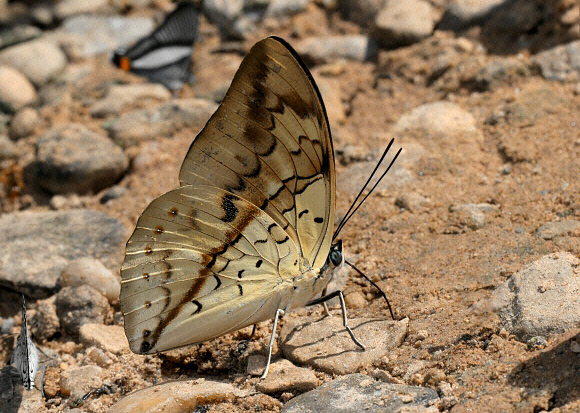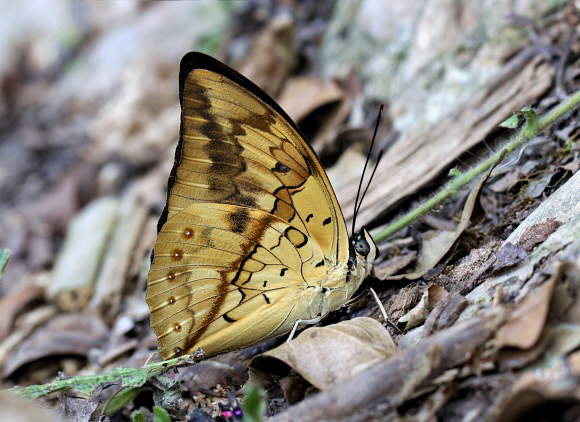 Archaeoprepona licomedes, Rio Shima, Satipo, Peru – Adrian Hoskins
Archaeoprepona licomedes, Rio Shima, Satipo, Peru – Adrian Hoskins
Introduction
The Charaxinae are a group of robust, medium to large Nymphalids characterised by having a rapid and powerful flight, stout bodies, and a habit of feeding at dung and carrion. They are represented in Africa by Charaxes, Palla and Euxanthe, in the Oriental and Australian regions by Charaxes and Polyura; and in the neotropics by genera including Consul, Memphis, Fountainea, Agrias, Prepona, and Archaeoprepona. There are 7 species in Prepona and 8 in Archaeoprepona.
Archaeoprepona and Prepona are very similar above, being dark brown with dazzling turquoise or blue bands. They can be distinguished by examining the underside hindwings. In Archaeoprepona there is a tiny submarginal ocellus in each cell, but in Prepona the ocellus near the apex, and the one near the tornus, are both greatly enlarged. Another difference is that Prepona males have tufts of yellow androconial scales on the hind-wings whereas in Archaeoprepona these are black.
Archaeoprepona licomedes is found in Colombia, Venezuela, Surinam, Brazil, Ecuador and Peru.
Habitats
This species is found in rainforests at altitudes between about 200-1200m.
Lifecycle
The lifecycle is unknown but is probably similar to demophon as follows : The eggs are spherical, white, and laid singly on Annonaceae or Malpigiaceae. The larvae have a prominent thoracic hump, and are dark brown on the thorax and below the spiracles, the remainder being pale brown. The head bears a pair of stout recurved horns. The chrysalis is bluish green with irregular white spots resembling lichen, and is ovoid in shape with a prominent thoracic bulge. It is suspended by the cremaster from a leaf or twig.
Adult behaviour
The butterflies have an agile and very powerful flight, and are only active in hot sunny conditions. They are known to live for up to 8 weeks, and to remain in the same area for long periods.
Males perch on tree trunks or on foliage, sitting facing head-downwards and with wings half open. They take part in impressive aerial sorties, chasing each other in broad circles around the tree tops. After each sortie they each return to their original perch.
Both sexes commonly feed at sap runs, rotting fruit, and less commonly at urine, dung or carrion. They descend from the tree tops in a series of steps, pausing for a few minutes at various points on the tree trunk or on foliage. Once they reach ground level they generally become so engrossed in feeding that they are oblivious of any human disturbance, but if deliberately alarmed they can fly off with amazing speed!

Archaeoprepona licomedes, Rio Shima, Satipo, Peru – Adrian Hoskins
